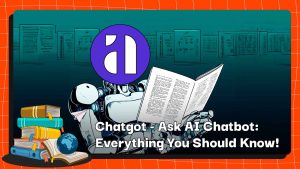Review Cartesi ($CTSI) – The 1st Decentralized and Secure Blockchain OS
One innovative development team, the Cartesi project, is working to improve smart contracts by addressing the critical challenges of high transaction fees and the need for scalability in the Ethereum network.
What Is Cartesi ($CTSI)?
Cartesi is the first Blockchain Operating System. It enables developers to create decentralized logic using Linux and standard programming environments while maintaining the decentralization and security inherent in blockchains. This entails offering developers a set of tools, libraries, and services that enable them to create smart contracts that are agnostic to the many blockchains available.
Cartesi enables millions of new startups and their developers to run Linux apps on The Blockchain OS. It opens the path for developers of all types to construct the next generation of blockchain applications with a ground-breaking virtual machine, optimistic rollups, and side-chains.
How Does It Work?
Cartesi applies streamlined software development techniques to blockchain technology, enabling it to run a hybrid system that includes both on-chain transactions and off-chain calculations in real-time.
Cartesi and Noether Machine
Cartesi makes use of numerous components outside the chain in order to reduce the number of time-consuming computations and temporary data stored in the main blockchain.
Cartesi Machine is a Linux-based virtual machine that is used by nodes to perform dApp calculations prior to sending the results to the blockchain. Operating in a Linux environment enables the development of dApps in a variety of popular computer programming languages.
Cartesi’s Noether is a side chain that serves as a data availability oracle. Noether is capable of recording and temporarily storing data that is only required for a shorter amount of time. Discarding data that was only required for a shorter amount of time saves space and improves the blockchain’s long-term efficiency.
The chain’s components
On the blockchain, the state of a Cartesi Machine and its connected dApps is represented by a cryptographic hash. This hash contains the start and end states of all out-of-chain dApp functions, allowing the network to maintain honesty and openness across the entire network.
Cartesi’s variant of optimistic rollups is used to communicate with blockchains. Optimistic rollups is a scaling solution that removes transactions off the chain and publishes transaction data to the main blockchain. This satisfies Cartesi’s desire to retain dApps decentralized and verifiable while increasing the network’s scalability.
Outstanding Features
The Blockchain OS
The Blockchain OS consists of:
- The Cartesi Machine: the core technology, a virtual machine that allows for verifiable computing using a Linux operating system
- Cartesi Rollups: a full solution for scaling blockchains that uses the Cartesi Machine within an Optimistic Rollups framework
You can run a simple DApp that the team already built using Python. Cartesi also offers Descartes, the computational oracle solution.
Here comes the mission of Cartesi:
- To offer a full operating system for blockchain applications.
- To solve the scalability problem using Optimistic Rollups along with the Cartesi Machine to support complex computations.
- To develop DApps of arbitrary complexity using mainstream development tools and software stacks, and have all of them sit on top of established blockchain networks such as Ethereum, Polygon, Avalanche and BNB Smart Chain.
Scalability
Cartesi enables dApps to do any computation without regard for transaction costs or other blockchain limits. Additionally, all calculations performed inside the Cartesi node are repeatable and verifiable. This preserves the decentralization required for the blockchain, as well as the blockchain’s security assurances. Local consensus is established inside the node, with any disagreements being sent to the main chain.
As a result, Cartesi is a solution for off-chain scalability. Scalability has been a critical problem for blockchains in their present development, since a lack of scalability has been a barrier to large-scale adoption of decentralized applications. Due to the clear need for scalability at the infrastructure layer, a significant number of public blockchains have concentrated their development efforts on addressing the scalability issue.
Cartesi Rollups

A DApp running on Cartesi Rollups consists of the following main components:
- Cartesi Rollups, a set of on-chain and off-chain components that implement an Optimistic Rollups solution and provide the general framework for building DApps.
- Cartesi Machine, a virtual machine (VM) that runs an entire Linux OS, in which each DApp’s back-end is executed.
- DApp Back-end, the application’s state and verifiable logic, which corresponds to the DApp’s smart contract. The back-end runs inside the Cartesi Machine as a regular Linux application.
- DApp Front-end, the application’s user-facing interface, such as a web app.
Cartesi’s Optimistic Rollups include interactive fraud proofs. The model was chosen because it places a limit on the number of computations that can be conducted. In other words, under this approach, the blockchain base layer is never responsible for doing whole computations: either there are no disagreements and therefore no computation happens, or, if there is a dispute, it only has to calculate a single instruction to differentiate between misbehaviour and honesty. In any instance, the results are always calculated off-chain, which means that the calculation required can be quite large.
Roadmap
The team has released an updated roadmap for 2022, more details here
Key Metrics
- Token Name: Cartesi
- Ticker: CTSI
- Blockchain: Multichain
- Token Standard: ERC20, BEP20, ARC20
- Contract:
Ethereum: 0x491604c0fdf08347dd1fa4ee062a822a5dd06b5d
Binance Chain: 0x8da443f84fea710266c8eb6bc34b71702d033ef2
Avalanche: 0x6b289cceaa8639e3831095d75a3e43520fabf552
Polygon: 0x2727Ab1c2D22170ABc9b595177B2D5C6E1Ab7B7B
Abritrum: 0x319f865b287fCC10b30d8cE6144e8b6D1b476999 - Token Type: Utility
- Total Supply: 1,000,000,000
- Circulating Supply: 524,768,427
Token Allocation
- Launchpad Sale tokens comprise 10.00% of the total token supply.
- Seed Sale tokens comprise 2.00% of the total token supply.
- Private Sale tokens comprise 5.00% of the total token supply.
- Strategic Sale tokens comprise 0.67% of the total token supply.
- Team tokens comprise 15.00% of the total token supply.
- Advisors tokens comprise 2.11% of the total token supply.
- Foundation Reserve tokens comprise 40.22% of the total token supply.
- Mining Reserve tokens comprise 25.00% of the total token supply.
Token Sale

Token Release Schedule

Token Use Case
- Transaction Fees: Clients pay CTSI to node operators to process, transmit, and temporarily store their transactions.
- Block Producer Selection: Block producers must stake CTSI tokens. Block producers are chosen based on their token balance. A PoS (Proof of Stake) mechanism selects miners at random to create the next block.
- Staking: By staking their tokens and engaging in the network, stakers earn CTSI.
- Challenge Computations: CTSI will also be utilized to verify blockchain computation results. It will act as an exit mechanism, ensuring correct program execution and discouraging bad behavior.
Backers
Team
Augusto Teixeira, Erick de Moura, Diego Nehab, and Colin Steil founded Cartesi in 2018. It began as an untrusted artificial intelligence marketplace but has now grown into a Layer 2 project focused on infrastructure constraints and blockchain scalability.

Advisors

Partners

Verdict
As long as the team continues to deliver results there seems to be little to criticize with the project. It provides a useful technology and a critical piece of the scalability puzzle. Through Cartesi developers should be able to create far better dApps, which in turn should speed the adoption and growth of the entire ecosystem.
Find more information:
Website: https://cartesi.io/
Twitter: https://twitter.com/cartesiproject
Telegram: https://t.me/cartesiannouncements
Discord: https://discord.com/invite/kfwB7sssn8
Medium: https://www.medium.com/cartesi
Reddit: https://www.reddit.com/r/cartesi/
If you have any questions, comments, suggestions, or ideas about the project, please email ventures@coincu.com.
DISCLAIMER: The Information on this website is provided as general market commentary, and does not constitute investment advice. We encourage you to do your own research before investing.
Marshall
Coincu Ventures



















